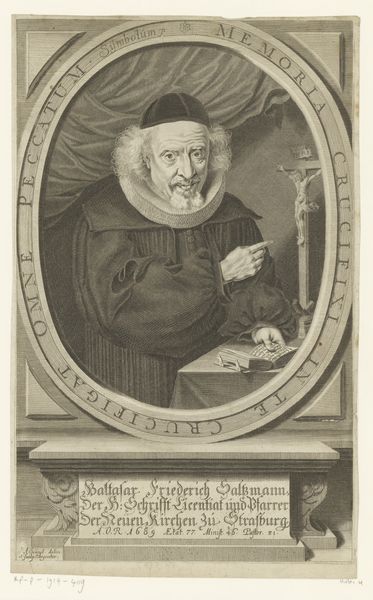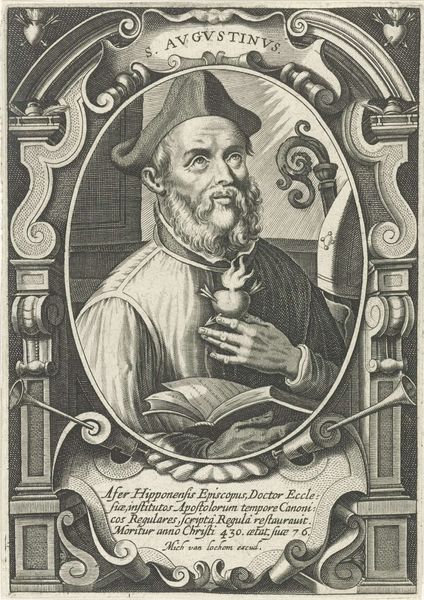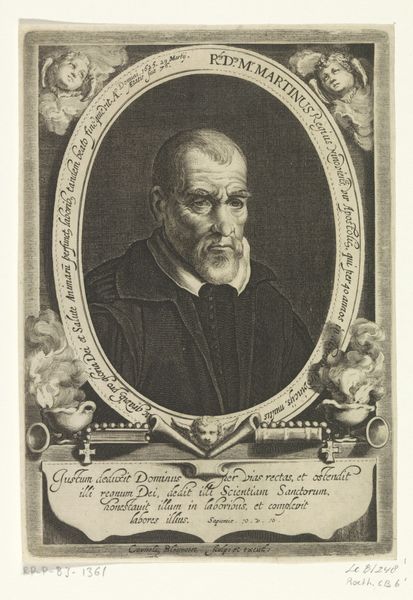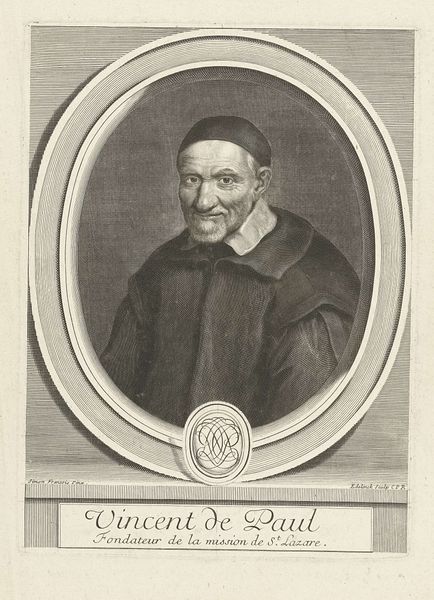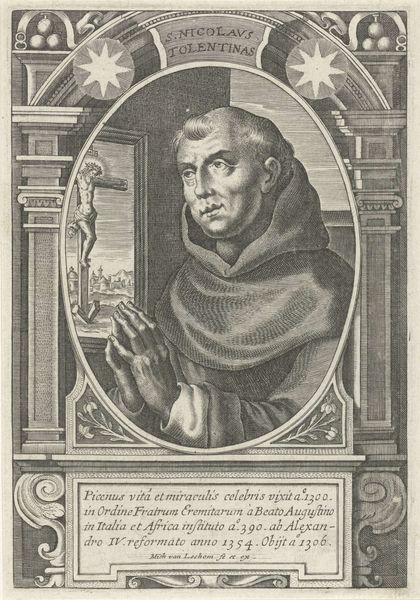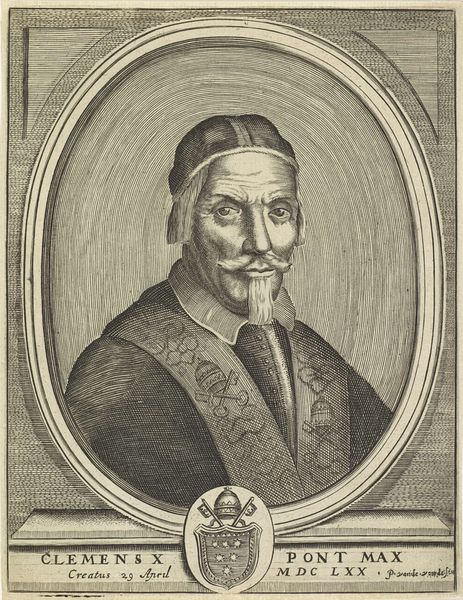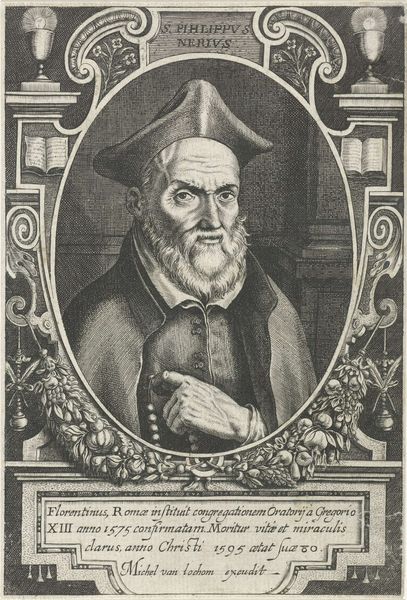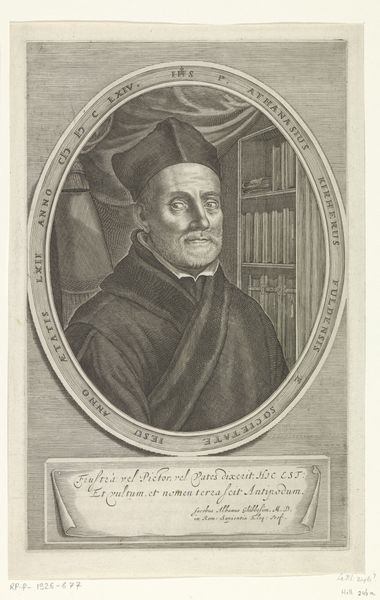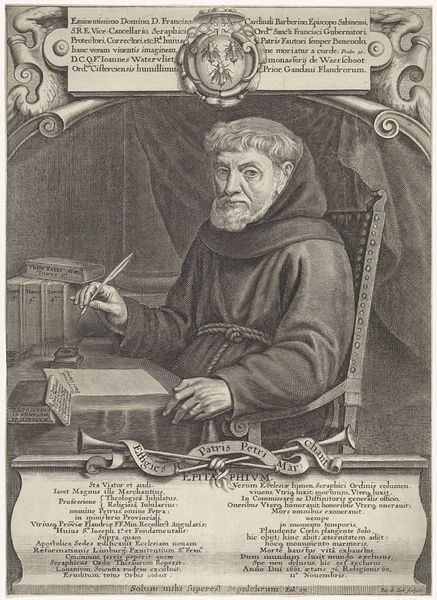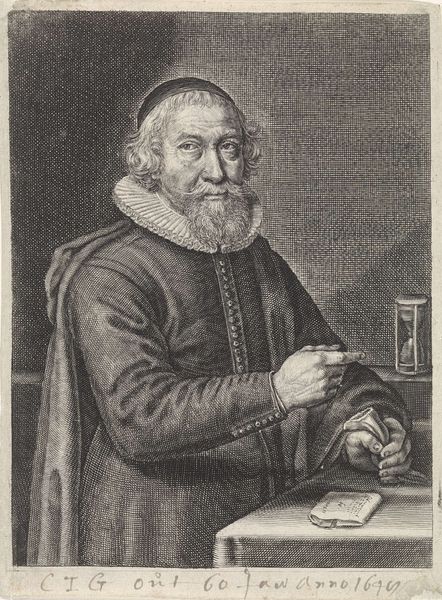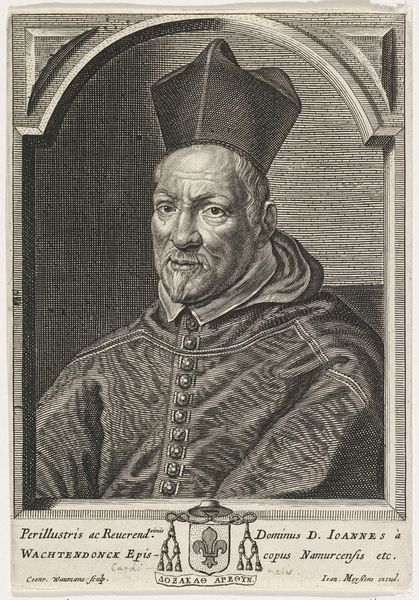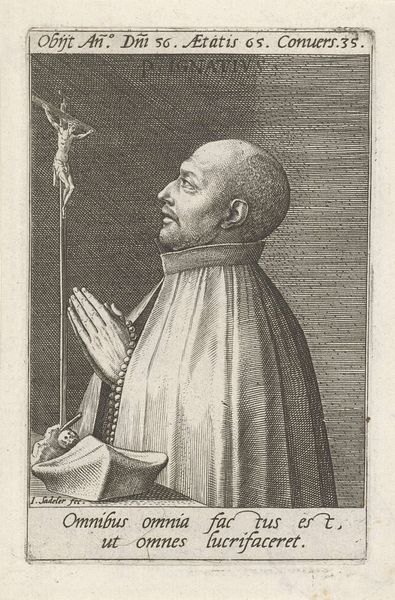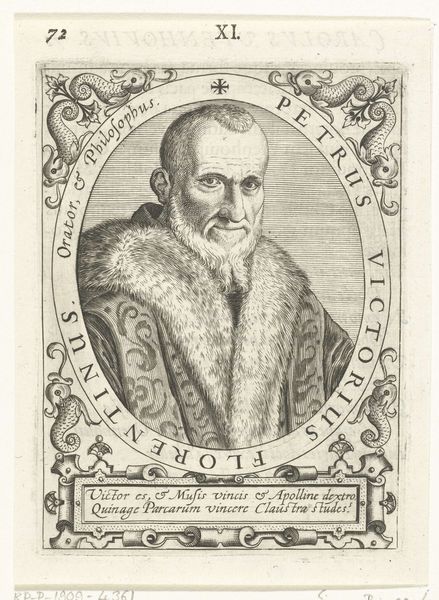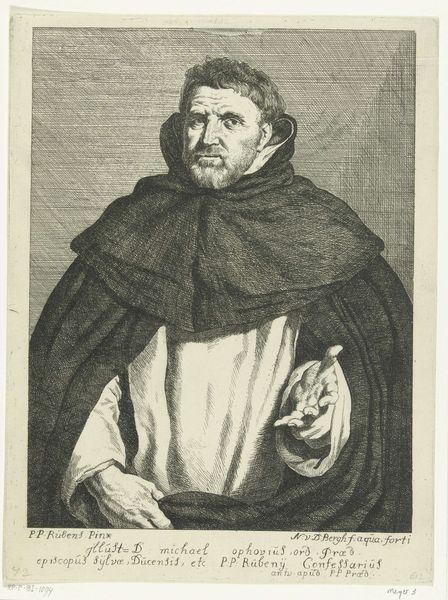
print, engraving
#
portrait
#
baroque
# print
#
old engraving style
#
caricature
#
portrait drawing
#
history-painting
#
engraving
Dimensions: height 250 mm, width 157 mm
Copyright: Rijks Museum: Open Domain
Jacob Matham made this portrait of Claes Wiggers Cousebant Vigerius sometime around 1628, using an engraving technique. Look closely, and you’ll see that the image is composed of thousands of tiny lines incised into a metal plate, which was then inked and printed onto paper. The material of the print – humble paper and ink – belies the incredible skill required to create such detail. Notice how Matham uses the density and direction of the lines to create shading and texture, giving a sense of depth to Vigerius's face and clothing. The sharp lines give the work a sense of precision. It’s a testament to Matham's mastery of the burin, the engraving tool, that he could achieve such a likeness. Engravings like this were relatively democratic; they allowed for the wide distribution of images. This was a laborious, skilled process, but the result was a multiple. The final print could be sold at a relatively affordable price, making art accessible to a broader audience. This portrait reminds us that even seemingly simple materials can be transformed into objects of great beauty and cultural significance through skilled labor.
Comments
No comments
Be the first to comment and join the conversation on the ultimate creative platform.
